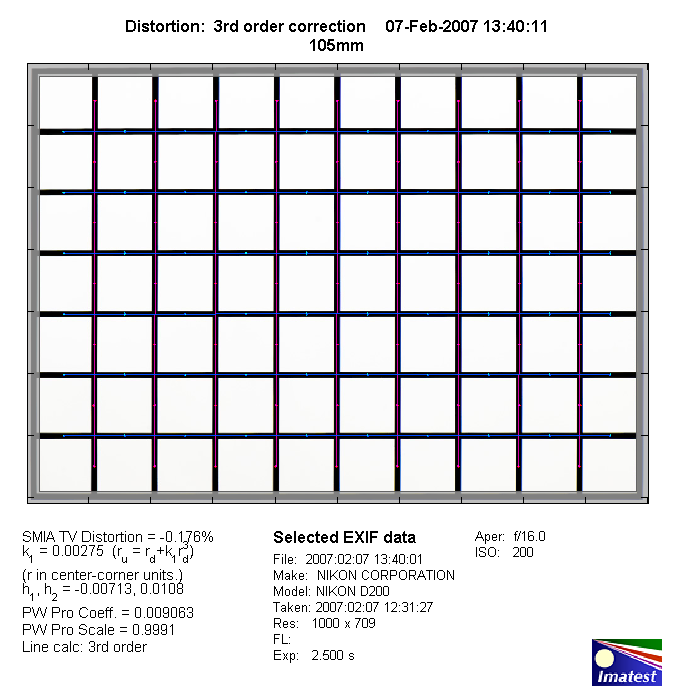|
Micro-Nikkor AF-S 105mm f/2.8G IF-ED VR - Review / Test Report - Analysis |
|
Lens Reviews -
Nikon / Nikkor (APS-C)
|
|
Page 2 of 3
Distortion
The Micro-Nikkor shows a very low degree of barrel distortion (~0.18%) which is
absolutely negligible in field conditions.

The chart above has a real-world size of about 120x80cm.
Vignetting
The AF-S 105mm VR is a full frame lens thus enjoying a sweet spot behavior on the D200.
Nonetheless it still shows a moderate degree of vignetting at wide-open aperture. From f/4
and up the problem is negligible. Vignetting is no issue at very close focus distances.

MTF (resolution)
Two lenses have been tested - the 1st sample was already excellent in terms of resolution
but the 2nd sample was even better. Typical for most macro lenses the resolution of the
Micro-Nikkor is superb straight from the max. aperture setting combined with a pretty even
quality between the center and the borders. In fact the Nikkor was able to set the new
record for border resolution among the lenses tested to date. Beyond medium aperture settings
diffraction is the limiting factor so better avoid very small apertures. This is a physical
limitation and not a design issue.
Please note that the MTFs charts below represent the performance near infinity
focus. For the time being macro performance tests are not possible.
Please note that the MTF results are not directly comparable across the different systems!
Below is a simplified summary of the formal findings. The chart shows line widths per picture height (LW/PH) which can be taken as a measure for sharpness.
If you want to know more about the MTF50 figures you may check out the corresponding Imatest Explanations
Chromatic Aberrations (CAs)
The first tested sample produced a very uneven and mediocre CA (color shadows at harsh contrast transitions)
characteristic. The second sample performed much better and about in-line to what you
can expect from such a high-performance lens. At large aperture settings CAs are very low and not
really field relevant. However, the average CA width increases steadily towards smaller aperture
setting with a peak around 1px at and beyond f/8. This is relatively high for a fix-focal.
Please note that lateral CAs can be easily corrected via software tools.

|